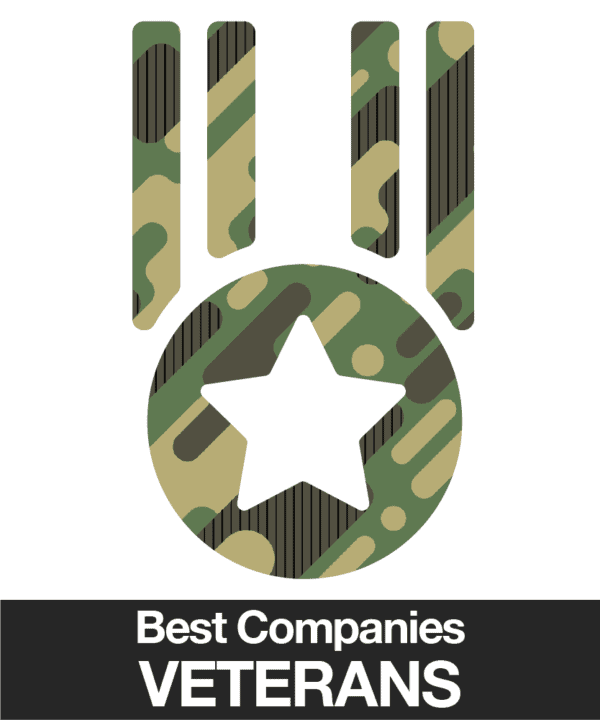The idea of creating an environment in which everyone feels comfortable and respected seems like a given. After all, we all want to feel accepted in our personal and professional lives. Diversity is particularly important in the workplace. However, this concept remains a challenge for many companies. Implementation of inclusive policies can take years and many tries to implement right.
So, how have companies successfully created workplaces that embrace diversity and inclusion best practices?
While trendy tech companies are certainly celebrated for their innovative workplace cultures, they’re not alone in the game. These four companies are leading the pack to create organizations where people of different interests and backgrounds can work together in an atmosphere of mutual trust and respect.
How do these leading companies implement diversity and inclusion best practices?
Securing support from leadership and employees at USAA
 Apart from employee well-being, diversity also impacts a company’s financial success. The Assistant Vice President of HR Operations at USAA agrees: “We’re a financial services company – and just like when you’re building a diversified financial portfolio, it’s critical that you build a diversified employee base.” USAA also understands that diversity isn’t just about race and gender, and has strategies in place for diversity hiring and retention. Most importantly, culture initiatives at USAA have 100% buy-in from the Board of Directors and always considers its employees’ opinions in planning processes.
Apart from employee well-being, diversity also impacts a company’s financial success. The Assistant Vice President of HR Operations at USAA agrees: “We’re a financial services company – and just like when you’re building a diversified financial portfolio, it’s critical that you build a diversified employee base.” USAA also understands that diversity isn’t just about race and gender, and has strategies in place for diversity hiring and retention. Most importantly, culture initiatives at USAA have 100% buy-in from the Board of Directors and always considers its employees’ opinions in planning processes.
Employee Resource Groups at Charles Schwab
 Charles Schwab is a leader in implementing diversity and inclusion best practices in a company-wide way. Schwab has especially excelled in implementing its innovative Employee Resource Groups (ERGs) that connect and engage team members of various backgrounds. These ERG teams meet frequently and have strong executive support to provide a wide array of programs, events, and services. Employees are able to join groups targeting anyone from military veterans to members of the LGBT community. Above all, when a company organizes inclusive networks, it empowers its employees and creates a sense of belonging.
Charles Schwab is a leader in implementing diversity and inclusion best practices in a company-wide way. Schwab has especially excelled in implementing its innovative Employee Resource Groups (ERGs) that connect and engage team members of various backgrounds. These ERG teams meet frequently and have strong executive support to provide a wide array of programs, events, and services. Employees are able to join groups targeting anyone from military veterans to members of the LGBT community. Above all, when a company organizes inclusive networks, it empowers its employees and creates a sense of belonging.
Crew Resource Groups at Vanguard
 Similar to the Employee Resource Groups at Schwab, Vanguard provides its employees with Crew Resource Groups (CRGs) to support a culture of inclusion. In CRGs, Vanguard helps “crew” members form meaningful relationships through service, teamwork, and education. Employees can join more than one group to reap multiple personal and professional benefits, such as mentorship and community building. Apart from building diverse networks, these groups are great ways to promote employee engagement, team camaraderie, enthusiasm, and mutual understanding.
Similar to the Employee Resource Groups at Schwab, Vanguard provides its employees with Crew Resource Groups (CRGs) to support a culture of inclusion. In CRGs, Vanguard helps “crew” members form meaningful relationships through service, teamwork, and education. Employees can join more than one group to reap multiple personal and professional benefits, such as mentorship and community building. Apart from building diverse networks, these groups are great ways to promote employee engagement, team camaraderie, enthusiasm, and mutual understanding.
Creating a gender-inclusive environment at GoDaddy
 GoDaddy has more than 14 million customers around the world with 63 million domain names under its management. Women represent a huge percentage of GoDaddy’s customer-base and the company recognized a need to have a similarly diverse workforce. As a result, GoDaddy launched its Women in Tech initiative in 2013 and has since rebranded itself as a gender champion, actively hiring more women across all departments and levels of management. GoDaddy was able to accomplish this by widening its recruiting channels to include more women, changing employment branding, and overhauling marketing messages.
GoDaddy has more than 14 million customers around the world with 63 million domain names under its management. Women represent a huge percentage of GoDaddy’s customer-base and the company recognized a need to have a similarly diverse workforce. As a result, GoDaddy launched its Women in Tech initiative in 2013 and has since rebranded itself as a gender champion, actively hiring more women across all departments and levels of management. GoDaddy was able to accomplish this by widening its recruiting channels to include more women, changing employment branding, and overhauling marketing messages.
Diversity and inclusion best practices don’t just stop here. Need more inspiration? Read these 55 ideas of how to implement diversity initiatives in your organization!




















